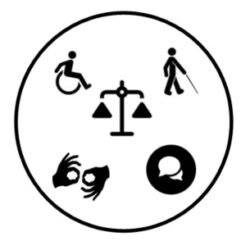On June 28, 2024, the Supreme Court handed down its decision in Loper Bright Enterprises v. Raimondo, overruling the regulatory deference in Chevron U.S.A. v. Natural Resources Defense Council. To… Read Moreabout Key Disability Rights Regulations Will Remain Authoritative in the Wake of Loper Bright: A Toolkit for Litigation.
Category: Legal analysis
Don’t Believe the Spin: 17 States Are Trying to Destroy Section 504.
Seventeen states have filed a lawsuit in Texas that, among other things, seeks to have our oldest and most basic disability rights statute — Section 504 of the Rehabilitation Act… Read Moreabout Don’t Believe the Spin: 17 States Are Trying to Destroy Section 504.
Rights of Immigration Detainees with Disabilities
A quick guide for lawyers assisting disabled detainees. The Department of Homeland Security (DHS), its components, including Customs and Border Protection (CBP) and Immigration and Customs Enforcement (ICE), and their… Read Moreabout Rights of Immigration Detainees with Disabilities
F&R, DREDF submit amicus brief in support of proactive ADA enforcement.
Fox & Robertson, along with Michelle Uzeta of the Disability Rights Education and Defense Fund (“DREDF”) drafted an amicus — or “friend of the court” — brief to the Ninth… Read Moreabout F&R, DREDF submit amicus brief in support of proactive ADA enforcement.
This is what a technicality looks like.
Defendant: does a thing that violates a civil rights law. Plaintiff: files suit under said civil rights law. Court: Defendant did the thing but you can’t show that it will… Read Moreabout This is what a technicality looks like.



